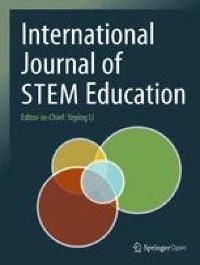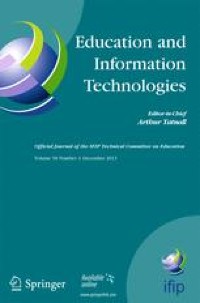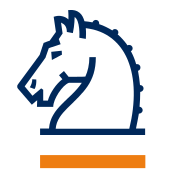
In this article, we look at what to consider if you incorporate artificial intelligence into teaching and how it will affect teaching. We look at the concept of AI literacy and examine the inclusion of artificial intelligence in education based on the SAMR and TPACK models. We will also look at a new way of looking at the implementation of technology (such as artificial intelligence) in education - in the model AI-CoACT, which deals with co-creation with AI.
Literacy is probably best defined as our resources and skills in deciphering, understanding, and using signs. One way to define AI literacy could be the following: The skills and competencies we need to use AI technologies as tools, consider them critically, understand them in the context of the surrounding society, and the ability to relate critically to the design and implementation of AI. Of course, this must include topics such as a basic understanding of technology, critical thinking, ethics, accountability, communication, collaboration – and probably many other topics.
The SAMR model
The SAMR model deals with the transformation that can occur with learning when new technology is introduced. The model was created by Dr. Ruben R. Puentedura in 2014 and contains four levels where technology can contribute to teaching.
In the first two levels (enhancement), we see a shift where technology replaces previous tools, either directly without functional change (substitution) or with a degree of functional improvement (augmentation). In the other two levels (transformation) there is a significant redesign, where technology changes the tools so much that the task itself changes (modification) so much that completely new types of tasks can be created that are 100% dependent on the new technology (redefinition).

The model is good when assessing a new digital tool such as .AI. On the other hand, it does not say much about how teachers should act in the new teaching situation and with the new skills that handling AI requires (AI literacy).
To understand AI literacy with teaching, we can advantageously look at the TPACK model.
TPACK model
The TPACK model deals with three important areas to look at when we want to include new technology in teaching: technological knowledge, pedagogical knowledge, and (subject) professional knowledge. When we talk about introducing new tools based on artificial intelligence, such as artificial intelligence, we are talking about it. ChatGPT in education, it makes sense to look at these three areas of knowledge and how they relate.

Let's unfold the different areas of knowledge a little. Technological knowledge (TK) is about the knowledge we as educators have about the technology we introduce into the classroom and our abilities to use the technology appropriately.
Pedagogical knowledge (PK) includes knowledge Pedagogical knowledge (PK) includes knowledge of learning, formation, and didactics (planning, implementation, and evaluation of teaching).
Professional knowledge (CK) is about the subject-academic content of the subjects: academic concepts, theories, methods, and models that we use to develop the professional knowledge that our students must acquire. This is where the teacher's knowledge of his subject lies.
Between technological and pedagogical knowledge (TPK), we find the learning potential of different technologies. Can a given technology do anything positive for learning? How does teaching change when new technology is introduced, and how is it done appropriately? Between pedagogical knowledge and professional knowledge (PCK), we find the connection between what we teach and how we do it for the students we are dealing with. Between technological and professional knowledge (TCK), we look at how technology can change the professional knowledge we teach.
In the middle of the model, we interact with professional knowledge, the influence of technologies and how we teach (TPACK) - i.e. where technology, subjects and pedagogy/didactics come together.
But what happens to all these knowledge domains when we introduce a new technology such as the Internet? ChatGPT or another generative artificial intelligence?
Artificial intelligence and its influence on different knowledge domains
When introducing a new technology, all three domains are affected to a greater or lesser extent. However, when we talk about artificial intelligence, we deal with a complex technology that complicates the situation.
According to the TPACK model, we as educators must know about the technology we want to introduce.
Taking ChatGPT as an example, we will therefore need to know how a language model works technically, what strengths and limitations it has, how and with what material it is trained, its credibility (or lack thereof), output bias, ethical implications, how best to prompt and much more before we can introduce it in the classroom. We must also know what it does to pedagogy and didactics, how we should use technology and for what, what significance it has for teaching, etc. We need to know what it does to the professionalism of our profession to introduce the technology.
We can gain technological knowledge (TK) by studying, exploring, and reading about technology. It is probably the easiest of the three (although it may seem confusing to many).
Pedagogical and didactic knowledge (PK) requires many experiments, e.g., action learning projects. We do not know in advance what it does to our teaching when we "allow" the use of a different (and for many unknown) technology, such as artificial intelligence - even if our pedagogical and didactic experience is great. There is no research in this area yet, and we find it difficult to wait for it before deciding on the technologies. It is also about the theoretical knowledge and understanding of how best to structure teaching to promote learning.
Knowledge of our subject's professionalism (CK) can also be quite complex when we introduce artificial intelligence. When the world is affected by new technologies, most knowledge domains will also be affected. In language subjects, you suddenly have texts written by artificial intelligence, e.g., news. When we see images made by generative AI from a text prompt, such as press photos of things that haven't happened. Or when we encounter codes in programming that we can debug without knowing the programming language, something happens to the subjects' professionalism that we have to deal with.
TPK, PCK, and TCK
Let's examine the relationship between technological and pedagogical knowledge (TPK). We, as educators, need to understand how the new technology can be used to achieve a learning goal. For example, when we use correction tools based on artificial intelligence in a language subject (because it may save time), teachers can lose some sense of students' development and learning, just as we lose important knowledge about the individual student's writing style. Learning resources will also change character to something adapted directly to the individual student's learning needs, which will, to a greater extent, help differentiate teaching.
If we don't pay attention, technology can affect the relationship between the teacher and the students. Therefore, we educators must consider how the new technology can best strengthen the relationship between students and teachers.
Between pedagogical and professional knowledge (PCK), we must look at which teaching approaches and strategies are best suited to teaching a given academic content. Here, adaptive learning tools, which use artificial intelligence to adapt the level and didactics to the individual student, can be very important.
In the interplay between technological and professional knowledge (TCK), we look at the relationship between technology and our professional knowledge. In some subjects, we already see artificial intelligence impacting the professional knowledge we base our teaching on. In news reporting, artificial intelligence is used to write and generate images. In chemistry, artificial intelligence is used more and more, for example, to predict syntheses and molecular structures.
Here, it is important to know that artificial intelligence will affect knowledge and skills central to a subject. In the future, there will be new areas in which we will not spend much time. But new opportunities will also arise in the subjects, filling both preparation and teaching.
TPACK model overlap
If we look at all these things together, it requires many of us as educators. The future teacher must be able to interact with all types of knowledge in interaction with artificial intelligence.
There is no idea for a deep technical understanding of how artificial intelligence works, but it is important to understand how the technology can be used in subjects and education. This includes attention to strengths and weaknesses and how these affect students' learning.
AI-CoACT
A brand new proposal for a framework based on SAMR, TPACK, and Bloom's taxonomy comes from Dr. Anjali Rajan Puthiyedath. The AI-CoACT model contains four interrelated components: Awareness, Integration, Collaboration, and Transformation. The model suggests a way to integrate and investigate artificial intelligence in teaching by looking at and evaluating, among other things, learning processes.

Awareness is very similar to TPACK's technological knowledge (TK) and is about understanding AI technologies, their potential applications in education, and the ethical considerations involved. Both educators and students should develop a basic knowledge of AI tools, their functions, and their limitations to decide when it makes sense to use them in education. This requires teachers to receive the necessary training in the new technologies and time to explore learning opportunities. It also makes sense for teachers and students to explore opportunities together so that an experienced teacher guides students' awareness and critical sense.
Attend courses and workshops on AI technologies. Consider the ethical implications of artificial intelligence in education. Explore different AI tools and their potential in teaching and learning.
Integration is the next step in the model. It is about how (after gaining a solid understanding of the technologies) you can incorporate AI tools into existing teaching and learning processes. It starts with identifying suitable AI tools for specific learning objectives and activities, after which the AI tools must be adapted to the applicable curriculum requirements and learning objectives. Once that is in place, training begins for students on how to best use the opportunities offered by AI tools based on the individual's learning needs. To achieve this phase, you can work with inquiry-based teaching, create action learning projects, and look at teaching differentiation.
Find suitable AI tools for specific learning objectives and activities. Adapt AI tools to curriculum requirements and learning objectives. Train students on how to use AI tools effectively for their learning needs.
At the intersection of consciousness and integration, an important process occurs. This is where you connect the basic understanding of AI technologies, the ethical challenges and critical thinking, and their practical application in teaching. It is also here that knowledge about the learning environment and cooperation structures is relevant. It is important to understand that this is an iterative process. The knowledge you gain as a teacher in the integration phase must be used to adjust the awareness phase before you can change the integration again.
Collaboration refers to the collective efforts of educators, students, and AI tools to create knowledge, solutions, and learning experiences together. This phase focuses on fostering a collaborative learning environment where humans and AI systems work together to achieve common goals. Collaborative projects that require students to work together, using AI tools to, for example, explore data, formulate solutions, or generate innovative projects, train students' collective problem-solving skills and critical thinking skills. In this process, the role of the educator goes from being a knowledge provider to being a facilitator, guiding students in their exploration and discovery.
Design learning activities encouraging interaction between students, educators, and AI tools. Foster collaborative problem-solving and ideas with AI tools. Please encourage students to provide feedback on AI-generated output and let them work on refining the process and product.
Educators, students, and AI tools interact in a collaborative learning environment that understands AI's capabilities and limitations at the intersection of integration and collaboration. As described in constructivist learning theory, this happens by constructing knowledge through social interaction and practical experience. It is also here that the need for critical thinking and ethical considerations (such as data protection and algorithmic bias) in integrating AI into education is greatest.
Transformation is about assessing the impact of AI co-creation on teaching and learning and refining the process. It involves continuously evaluating the effectiveness of AI integration, identifying areas for improvement, and adapting the approach to AI in education to maximize its benefits. This is where we gain important knowledge about the impact of new technologies on our teaching and require data collection on the effects of AI tools on student learning, conversations with teachers and students about their experiences, and the willingness to make changes based on this knowledge. Transformation lies at the intersection of the three domains of awareness, integration, and collaboration, and it underlines the need for disruption readiness. Educators and educational institutions must be prepared to embrace technological changes, pedagogy/didactics, and professional knowledge to ensure students have the skills and competencies needed for an AI-powered world.
Collect and analyze data on the effectiveness of using AI tools in teaching and learning. Identify areas of improvement and adjust the AI co-creation process accordingly. Share best practices and experiences with colleagues and peers.
Call for research on education and artificial intelligence
With this article, we would like to encourage many studies to be initiated into how, where, and not least, whether it makes sense to implement artificial intelligence in education. In this article, we have only looked at opportunities and challenges in general, and there is certainly a lot that we have overlooked, or that will change with the development of artificial intelligence.
Our call is, therefore, to initiate research projects that investigate new possibilities and ensure that our pedagogical and didactic methods are refined so that new technologies do not overtake us. Only through research can we exploit the potential offered by the new technologies. We must opt out of the technologies that do not provide meaning and added value to our education.
Sources


https://www.sciencedirect.com/science/article/pii/S0747563222002886
https://www.powerschool.com/blog/the-tpack-framework-explained-with-classroom-examples/






AI Literacy from Educators’ Perspectives In book: AI Literacy in K-16 Classrooms (pp.131-139), Davy Tsz Kit Ng • Jac Ka Lok Leung, Maggie Jiahong Su, Iris Heung Yue Yim, Maggie Shen Qiao, Samuel Kai Wah Chu, Springer 2022











